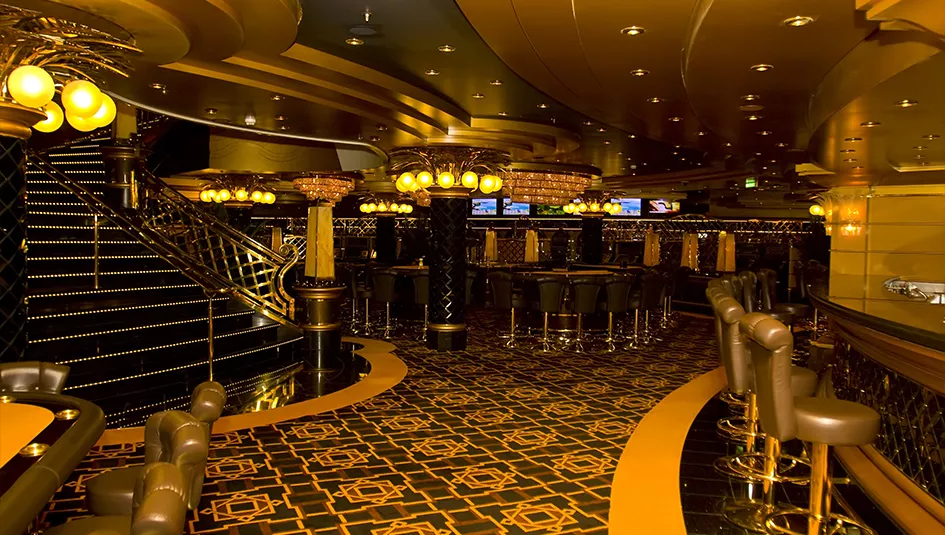Early Beginnings in Casino Design
Long before the neon lights of Las Vegas or the digital interfaces of online platforms, casinos had much humbler origins. The earliest casinos can be traced back to 17th-century Italy, where they were known as "casini," small houses or social clubs. These establishments were essentially private settings where people gathered for social interaction and, of course, a bit of gambling.
In terms of design, these early casinos were far removed from what we are accustomed to today. Wood-panelled interiors, dimly lit rooms, and heavy curtains were standard features. The focus was more on privacy and discretion rather than grandeur. Comfort was key, but there was minimal attention to the psychological aspects of design that would come later. These early establishments were more like intimate salons where friends and family would gather to play card games rather than the sprawling entertainment complexes we see today.
However, as gambling grew in popularity, so did the spaces that hosted these activities. By the late 19th and early 20th centuries, more opulent and larger casinos started appearing, particularly in places like Monaco, setting the stage for the subsequent era of casino design, where luxury and glamour would take centre stage.
Twentieth Century Opulence and Elegance
The 20th century marked a dramatic turning point for casino design, characterized largely by the rise of Las Vegas in the United States. Whereas early casinos leaned towards discretion and intimacy, this era embraced spectacle. Inspired by Hollywood glam and the allure of celebrity culture, Las Vegas casinos began to focus on creating a sense of luxury and opulence. Crystal chandeliers, grand foyers, and plush carpeting became standard features, signalling to guests that they were entering a world of high stakes and even higher class.
The mid-century brought with it a new design concept known as the "Las Vegas model," featuring large, open spaces and lavish decor intended to overwhelm and dazzle patrons. The idea was to create an environment where guests felt like stars, even if just for a night. Casinos started incorporating restaurants, shopping malls, and even theatres, evolving into full-fledged entertainment complexes.
Beyond aesthetics, designers also began to consider psychological elements more closely. Subtle factors like the absence of clocks and windows, as well as the strategic placement of services, aimed to keep patrons engrossed and, ideally, spending. Casinos were no longer just places to gamble; they were immersive experiences designed to captivate all senses.
However, while the 20th century saw a concentration on interior opulence, it also set the stage for more functional, player-focused designs. The concept of "player's clubs," rewarding frequent visitors with points and perks, further solidified the industry's shift towards customer-centric design. These developments paved the way for the next phase of casino design, where technological advancements and customer preferences would bring even more changes.
The Psychological Influence in Casino Layouts
As the 20th century progressed, psychological theories started having a more pronounced impact on casino design. Two main schools of thought emerged: the maze layout and the playground layout. The maze design aimed to create an environment where patrons would easily get lost, both figuratively and literally, in the gaming experience. Casinos utilizing this approach employed narrow walkways, confusing layouts, and an abundance of slot machines and gaming tables to entice and hold players. The goal was to keep patrons wandering and engaged, perpetually one turn away from the exit but always surrounded by gaming opportunities.
In contrast, the playground layout took a decidedly different approach. Championed by design theorists like Roger Thomas, this model emphasized openness and comfort. Spacious layouts, high ceilings, and natural light aimed to create a more relaxed environment. The idea was that a more enjoyable atmosphere would encourage patrons to stay longer and, by extension, spend more. The playground layout often included amenities like lavish lounges, gourmet restaurants, and high-end shops to offer a more holistic entertainment experience.
While both design philosophies had their merits and drawbacks, the industry as a whole has generally moved toward a hybrid model. Casinos today often incorporate elements of both maze and playground designs, blending the excitement and intrigue of winding pathways with the relaxed atmosphere of open spaces. This evolving approach recognizes that different types of patrons seek different experiences, and a well-designed casino should cater to a broad spectrum of preferences.
Modern Layouts Shaped by Technology
In the past couple of decades, technology has had a profound impact on the look and functionality of casinos. Gone are the days when slot machines were purely mechanical devices; today's machines sport intricate LED displays, touchscreen controls, and immersive sound systems. The influence of technology isn't just limited to the games themselves. From facial recognition systems for security to mobile apps that guide you through the casino floor, technology has woven itself into the fabric of the casino experience.
Floor plans have also evolved, moving toward more open concepts to accommodate the modern player's desire for a social gaming experience. Large, open spaces have been adapted to include communal gaming tables where friends can gather and socialize while playing. Video walls and multi-game platforms offer a wide array of options within a single, centralized area, making it easier for patrons to navigate the gaming floor.
The rise of technology has also democratized the gaming experience to some extent. With the proliferation of mobile gaming apps and online platforms, casinos are now not just physical spaces but virtual arenas as well. This shift has pushed traditional casinos to adapt their design to integrate digital elements. Interactive touchpoints, virtual reality stations, and augmented reality features are increasingly common, offering a multi-dimensional gaming environment that merges the physical and digital worlds.
However, this integration poses its own challenges, including the need to maintain a coherent design language that works both for traditional elements and new technological additions. This complex task is the next frontier for casino designers, striving to create spaces that appeal to both tech-savvy younger audiences and traditional gamers alike.
Virtual Casinos and Online Adaptations
The digital age has not only changed the design of physical casinos but has also given rise to a whole new venue: online casinos. While you might think that design becomes less relevant in a virtual space, it's actually quite the opposite. The elements of colour, layout, and user interface are critical in online platforms, where the competition for players' attention is fierce.
Online casinos, such as Regent Play, employ design strategies that parallel their physical counterparts in many ways. They use vibrant colours to create an inviting atmosphere and carefully design the user interface to make navigation intuitive. Games are categorized and arranged in a manner that encourages exploration, often accompanied by preview snippets or demo modes to entice players.
However, there are also unique challenges that come with virtual spaces. The absence of physical cues means that designers must be even more attuned to user behaviour and preferences. Issues like load time, mobile compatibility, and interactive features become crucial design considerations. Moreover, the rise of live casino experiences online, featuring real dealers via video stream, pushes the design to mimic the aesthetics and ambiance of a physical casino, all delivered through a screen.
In a way, the emergence of online casinos has brought the design full circle. It adapts many elements from traditional casinos while also introducing new dimensions that are only possible in a digital format.
Eco-Friendly and Sustainable Innovations
Sustainability is no longer just a buzzword; it's a responsibility that industries worldwide are starting to take seriously, and the casino industry is no exception. Newer establishments are opting for LEED-certified designs, which focus on energy efficiency, water conservation, and sustainable materials. Solar panels, energy-efficient lighting, and waste recycling programs are becoming more common features. The objective is not just to minimize the environmental impact but also to create a space that resonates with an increasingly eco-conscious customer base. Though still in the early stages, these greener designs indicate a meaningful shift in how casinos think about their long-term footprint.
Take a Spin at Regent Play
Why wait to see where casino design is headed next when you can experience it right now? Here at Regent Play we use cutting-edge to deliver a modern casino design. Head over to the casino now to experience it for yourself.

 Popular Animal-Themed Online Slots at Regent Play
Popular Animal-Themed Online Slots at Regent Play Can A Casino Legally Deny You Your Winnings?
Can A Casino Legally Deny You Your Winnings?